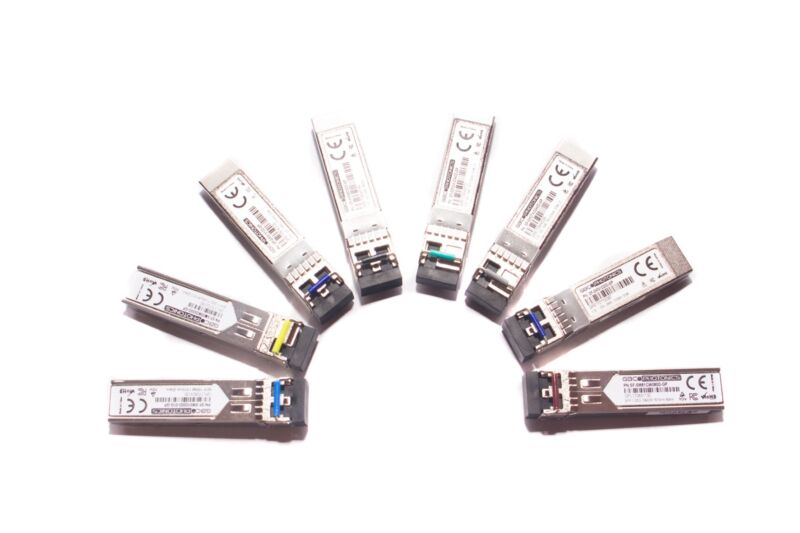In a world with more connected devices than humans, we face a telecoms dilemma – how do we increase connectivity while reducing greenhouse gas emissions? Emerging technologies like 5G and 6G promise to change the face of communication, but their development requires increased power consumption and carbon emissions. Given that innovation is still vital, how can telecom operators find a balance between increased data demand and sustainability? Here, Marcin Bala, CEO of telecommunications networks specialist Salumanus, explains how optical transceivers could hold the answer.
According to a 2021 report from Boston Consulting Group, the Information and Communications Technology (ICT) industry accounts for three to four per cent of global carbon dioxide emissions, about twice the impact of civil aviation. With data traffic increasing at a rate of 60 per cent per year, this contribution is forecasted to grow to 14 per cent of all CO2 emissions by 2040.
Another issue telecom operators are faced with is electronic waste. The UN’s Global E-Waste Monitor estimated that a record 53.6 million metric tonnes (Mt) of electronic waste was generated in 2019 alone. Unless urgent measures are taken, global e-waste will reach 74 Mt by 2030, almost doubling the e-waste in just 16 years.
These figures show that the sustainability issue is imperative for telecom operators. New strategies need to be employed to manage the increasing demand for data in a sustainable way. One example is investing in photonics solutions and smart transceivers.
Optical over electrical
Simply put, photonics is the science and technology of light – generating, controllingand detecting photons, which are particles of light. Photonics is at the core of many modern technologies, from smartphones to laptops and medical instruments.
In telecommunications, photonics offers great advantages for energy saving. Due to its properties, light transmitted over optical fibres can carry more data faster and over longer distances than electric signals over copper wires, while dissipating less heat in the process. Copper networks consume between one and two watts over short distances and about 3.5 watts at a distance of 100 metres. In comparison, fibre networks can use less than one watt to transmit 10 Gigabit Ethernet (GbE) over 300 to 400 metres. Lower energy consumption can help reduce CO2 emissions, especially in connector-heavy applications like hyperscale data centres.
By generating less heat, optical networks require less cooling. According to the US Environmental Protection Agency (EPA), each kilowatt of network power in a data centre requires a kilowatt of power for cooling services. Optical fibres not only reducethe power needed to cool down the network, but also eliminate the need to invest in larger cooling systems, saving money and space.
The longer reach of the optical network also helps save power by reducing the number of times optical signals need regeneration. Thus, by replacing copper and coaxial links that use electrical signals, telco operators can provide more data while reducing the required power per bit.
Next generation of transceivers
To further increase energy efficiency in the industry, network operators shouldconsider the trend of miniaturisation. In recent years, optical devices, such as transponders and transceivers, have gone from big, expensive and wired solutions to compact, integrated and pluggable sizes without compromising performance.
For example, one of the latest 400G transceivers, the QSFP-DD is 18.35 millimetres (mm) wide, 89.4 mm long and 8.5 mm tall, the size of a large USB stick and it has a power consumption of up to 22W. Smaller equipment has a reduced footprint and contributes to better airflow for cooling requirements.
Compact transceivers can be easily integrated with the rest of the equipment andplay a significant role in the architecture of modern applications, like connecting long distance data centres. A QSFP28 DWDM with incorporated transponders featuresallows data centre operators to send DWDM wavelength directly from network devices without the need to power additional devices. It also provides a capacity of up to 4 Tb/s on one fibre and facilitate the connection of data centres that are up to 120 km apart.
This integrated solution has a maximum power consumption of 4.5 W, which is much lower than the form factor of other 100G DWDM transceivers and can help operators achieve up to 90 per cent energy saving. Thus, it is ideal for operators who want to achieve a green data centre.
The universal optical transceiver
On top of energy efficiency, network operators need to tackle the problem of e-waste to maximise sustainability. One way to do that is investing in a universal optical transceiver – an innovative concept created by Salumanus – which allows users to alter the configuration of optical transceivers to work with most network devicesavailable on the market.
A universal transceiver means that when a network operator decides to implement equipment from a new vendor in their network infrastructure, they won’t need to discard their existing transceivers and buy new ones to match. Instead, they can simply reconfigure them and keep them in operation for as long as possible.
The transceiver can also support inventory optimisation, as network operators won’t need to stock a huge variety of branded transceivers. This will ensure network facilities are decluttered and ventilated properly to contribute further to the cooling process.
While the world is becoming more connected and demands ever larger amounts of data on a daily basis, telecom operators have ample solutions to combine increased connectivity with sustainability. From replacing energy-heavy copper networks with optical fibre, to tapping into the trend of miniaturisation and integrated components and eventually investing in a universal optical transceiver to reduce e-waste.
At Salumanus, we help network operators build sustainable, efficient networks and encourage our customers to contribute to making the telecommunications industry greener.
Find out more about our technologies for sustainable networks, including our own universal optical transceiver at www.salumanus.com.






